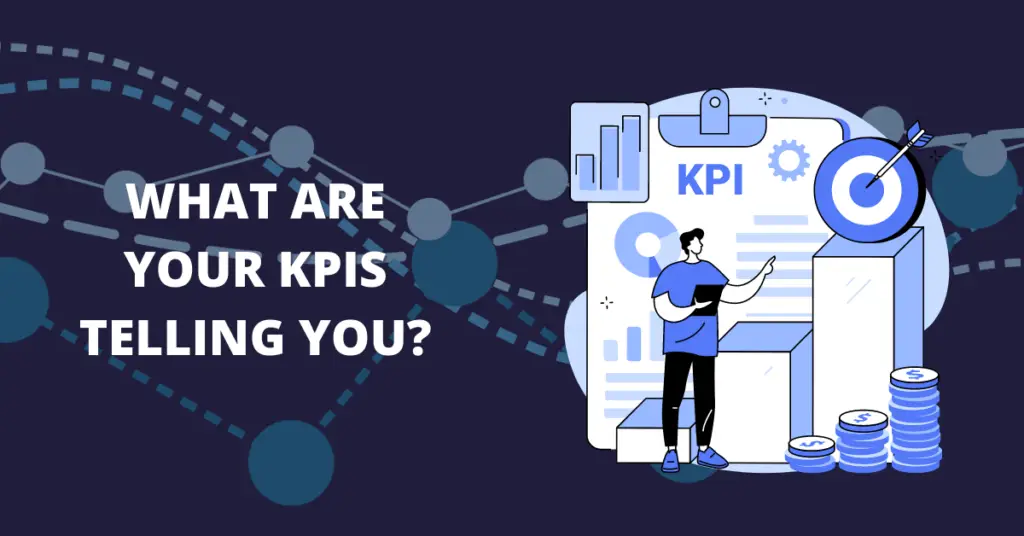
Modern marketers go beyond the click-through and open rates. Although good to track, they just scratch the surface of how you are performing. When asked the question “how did that campaign do?” what do you measure in order to answer? For a marketing manager, it’s critical to present meaningful data and make sure the team’s Key Performance Indicators (KPIs) are focused on what is impactful to success. It’s also important to understand the implications of those KPIs – for better or worse – in order to use the data to make actionable decisions.
Take your rejected MQL (marketing-qualified lead) rate, for example: if 85% of your MQLs are being returned to marketing, do you know what’s wrong? What kind of content needs to be improved? When you focus on the KPIs that really matter, they can tell you about how your marketing campaigns are performing –and point to what to consider.
6 KPIs That Matter
MQL Conversion Rate
The MQL conversion rate indicates the overall quality of leads being handed off to sales. If the conversion rate is low, it indicates that leads are of poor quality or sales, potentially, is not responding to the leads quickly enough – when they are “hot”.
Why This is Important
This is an important metric because the MQL stage is where marketing hands off a lead to sales. This KPI provides the first glimpse into marketing’s ability to generate those sales leads and how well marketing and sales are working together. The measurement itself is a great way to encourage movement through the pipeline.
Rejected leads are not only the important learning metric here; tracking them also creates another way to bridge that divide between marketing and sales. If the rate of rejected leads is high, marketing should look for trends and then meet with sales to discuss why. Solving the ‘why’ is not something that your teams are going to get on the first try. It’s important to keep communication open between the marketing and sales teams to ensure that these sorts of weak points in the overall process continue to improve over time. If marketing and sales are effectively communicating this conversion rate should increase over time.
SAL to SQL Conversion Rate
This KPI measures the next critical point in the pipeline. Sales has created an opportunity and this lead is starting to show some real promise. These leads have become the cream of the crop, and what happens to these is what Marketing should really be learning from.
Why This is Important
The SAL conversion rate is where you can begin to really analyze attribution and find out which campaigns and trends are creating quality leads and which ones are not. Not only does this give insight into which messaging is resonating most with high value leads, your analysis at this stage becomes a tool for correcting course and moving budget to where it will have the biggest impact. Be prepared to dive in to details, such as these examples:
- Did any of these leads attend this year’s costly event?
- What is the least productive lead source? How much did you spend with that content syndication vendor?
Funnel Velocity
This is a great KPI to get a picture of how quickly leads are moving from one stage to the next. There are many insights to gain depending on how you look at the velocity.
 Why This is Important
Why This is Important
Tying velocity to campaigns can help determine which campaigns are converting leads the quickest and are the most likely to contribute to a steady revenue stream. Measuring velocity makes it easier to draw conclusions when that velocity is tied to a lead stage, such as how quickly MQLs are being accepted or rejected. This can be very telling when trying to measure lead quality.
Being able to demonstrate how quickly a lead moves from SAL to SQL can also help convince sales of the value of marketing’s efforts in keeping that lead in evaluation stage nurturing (a typical debate that marketing loses, particularly without funnel velocity proof).
Journey Nurture Progression
Nurture campaigns are set up to move leads through the buyer journey, so it’s nice to see how leads are progressing through them. Since nurtures are highly content and message driven, and also focused on the stages of the buyer journey, it’s important to make sure that the content you deliver resonates with those stages, or that the message focuses on the right audience.
Why This is Important
The Journey Nurture Progression is a great metric for gauging the overall quality of content, messaging and also how well you’ve segmented your database. If you find a stage in your nurture where leads are not moving from one stage into the next, it might be a good indication that it is either the wrong time to put that particular message in front of prospects, or maybe it is just the right message – but going to the wrong audience. Use this metric as a great way to learn and proactively course correct.
Campaign Attribution
First touch? Last touch? Multi-touch? There is no wrong model. Whichever one you use, you’ll want to track campaign association to learn which campaigns get the most touches, which ones fall flat, and which ones turn into leads and opportunities.
Why This is Important
Tracking campaign attribution is not only useful on its own, it is a crucial building block for other KPIs. In fact, you won’t be able to derive any of the other recommended KPIs without it.
Campaign Attribution helps you identify trends in the content being consumed in addition to quantifying how many touches it takes for a lead to become and opportunity – or better yet, a closed-won opportunity. Eloqua users can even track campaign engagement from unknown web visitors when they use the 4Thought Marketing Anonymous Campaign Attribution App. This app provides visibility into what visitors are interested in and then associates those anonymous visits with the right named lead once that visitor supplies identifying information.
Closed-Won Opportunity Attribution
This KPI is the mother of them all. Closed-won opportunity attribution ties a specific lead source (channel) or campaign to a closed-won opportunity. This is where real revenue is attributed back to marketing. Measure this and you have what you need to prove Marketing’s value to the business.
Why This is Important
Closed-won attribution takes campaign attribution and attaches it to an opportunity.
If a marketing team can track closed-won opportunities to associated touch points, it will be easier to identify which campaigns are the most effective, and which ones need improvement.
Equally important, marketing can quantify what percent of the total opportunity dollar amount closed and won was influenced by marketing and what percent came from marketing-generated leads. This is what puts a real value on marketing’s contribution to revenue and provides management and the C-suite the visibility into how big a piece of the pie marketing contributed to revenue. This is the KPI that justifies budgets and earns organizational respect. This KPI is CMO gold.
Key Takeaway
Getting the benefit of what KPIs can tell you comes down to collecting the right data, applying logic to that data, and then putting it into an easily digestible format. Visit our KPIs page for more information on how 4Thought Marketing helps marketing teams build out their KPI and reporting strategy, or reach out to our team for expert help.

